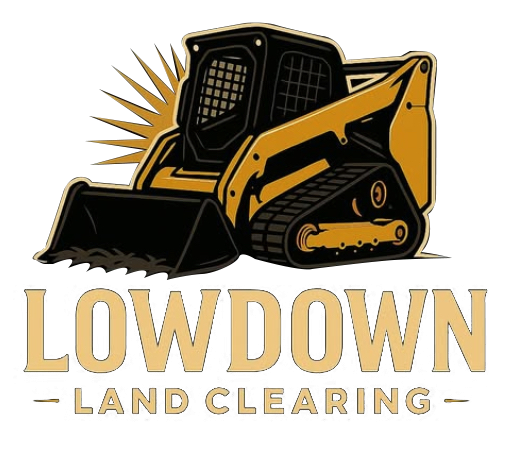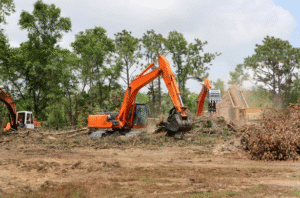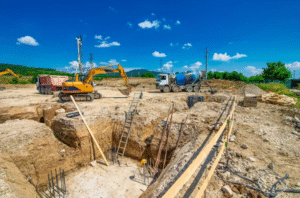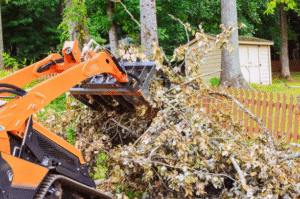Commercial land clearing is a foundational step in preparing property for large-scale construction projects. If developing residential subdivisions, industrial parks, commercial buildings, or roadways, successful land clearing requires careful planning, appropriate equipment, and a clear understanding of local environmental and regulatory demands. In Utah, the state’s unique geography, diverse ecosystems, and strict regulations present specific challenges that must be overcome to ensure projects stay on track, on budget, and compliant with the law.
This article explores the most common challenges faced during commercial land clearing in Utah and offers practical solutions that help developers, contractors, and property owners confidently navigate the process.
Distinct Challenges in Utah’s Commercial Land Clearing
The wide variety of landscapes in Utah—from mountainous regions to arid deserts—makes commercial land clearing a complex undertaking. The challenges below are unique to the state and require region-specific expertise.
Diverse Terrain and Soil Conditions
Utah’s terrain ranges from rugged, rocky mountains to flat desert basins. Clearing land in steep or uneven terrain is inherently more difficult and costly. Machinery must be suited to handle slopes, rock outcrops, and sometimes unstable soil. Rocky or clay-heavy soils can impede excavation and grading, requiring specialized techniques to break up hard surfaces or improve drainage.
This diversity means a one-size-fits-all approach to land clearing is ineffective. Contractors must tailor their approach based on soil tests and terrain surveys to avoid costly mistakes and delays.
Thick Vegetation and Wildland-Urban Interface Zones
In certain parts of Utah, commercial sites border forests, national parks, or wildland-urban interface zones. These areas often feature dense brush, tall trees, and undergrowth that require heavy clearing efforts. The threat of wildfire is heightened in these zones, requiring careful debris management and fire prevention measures.
Clearing without disturbing protected vegetation or wildlife habitat is an additional challenge. Many of these lands are habitat for endangered species or have delicate ecosystems requiring compliance with environmental regulations.
Environmental Regulations and Permitting Complexity
Utah enforces strict environmental laws designed to protect water sources, soil quality, and local wildlife. Commercial land clearing projects must obtain multiple permits before clearing begins, including grading, stormwater management, and erosion control permits.
Environmental compliance may require preparation of environmental impact reports, protections for wetlands or waterways, and ongoing monitoring plans during construction. This bureaucracy adds complexity, with delays possible if permits are incomplete or regulations are misunderstood.
Contractors unfamiliar with Utah’s permitting requirements risk work stoppages, expensive fines, and reputational damage.
Larger Scope and Scale of Work
Commercial projects cover large acreages that demand substantial equipment, extended work schedules, and efficient coordination. Managing debris removal, staging areas, and equipment fueling and maintenance across a large site requires logistical expertise.
The volume of vegetation and earth to be moved can create bottlenecks if the project is not carefully phased and scheduled. Unexpected weather events common in Utah—such as sudden storms or high winds—can further complicate timing.
Protecting Sensitive and Historic Areas
Some commercial land clearing sites may be located near or include archaeological sites, historical landmarks, or culturally sensitive lands, particularly in Utah where indigenous history is rich.
Identifying and respecting these areas during clearing is critical. Failure to do so can halt a project and result in legal action.
Effective Solutions to Overcome Commercial Land Clearing Challenges
Successful commercial land clearing in Utah requires a combination of strategic planning, expert execution, and collaboration with regulatory authorities.
Detailed Site Assessment and Planning
A thorough site assessment conducted by experienced professionals is critical. Soil analysis, vegetation surveys, and terrain mapping help contractors develop a tailored clearing plan.
Early identification of environmental concerns and obstacles allows for strategic planning of equipment use, preservation areas, and erosion control.
Using Specialized Heavy Machinery
Heavy machinery such as mulchers, bulldozers, excavators, and stump grinders designed for rugged conditions is essential for handling Utah’s terrain. Technologies like GPS-guided equipment help improve precision grading on uneven terrain.
Equipment choice affects safety, efficiency, and environmental impact. High-quality machinery reduces the risk of damage to the land while speeding up clearing.
Environmental Protection Protocols
Integrating erosion control measures like silt fences, sediment basins, and revegetation of disturbed areas preserves soil and water quality.
Contractors also implement wildlife management practices to protect sensitive species and their habitats, aligning with state and federal regulations.
Close Coordination with Permitting Agencies
Maintaining clear communication with Utah’s environmental and land management offices simplifies the permitting process. Many contractors have established relationships with agencies, speeding approvals.
Staying informed about changes in local regulations helps avoid costly compliance issues mid-project.
Phased Clearing and Efficient Waste Management
Breaking the project into sections allows crews to focus on manageable areas, improving quality and speed.
Effective staging of debris removal and disposal minimizes site clutter and fire risk.
Employing onsite mulching and recycling of cleared material can reduce disposal needs and environmental footprint.
The Advantages of Partnering with Commercial Land Clearing Experts
Choosing a qualified contractor with experience in Utah’s unique conditions brings substantial benefits:
-
Reduced Delays: Expertise in permitting and efficient workflows keeps the project on schedule.
-
Compliance Assurance: Professional adherence to environmental and safety standards avoids fines and shutdowns.
-
Safety First: Trained crews and modern equipment minimize accidents and property damage.
-
Cost Efficiency: Expert planning and execution control costs related to equipment, labor, and materials.
Preparing Your Commercial Land Clearing Project for Success
Owners and developers can take proactive steps to ensure their clearing projects run smoothly:
-
Define your project’s scope and timelines clearly with all stakeholders.
-
Conduct early environmental and cultural assessments to identify protected areas.
-
Engage experienced land clearing contractors during the planning phase.
-
Verify all necessary permits are obtained prior to beginning work.
-
Establish regular communication channels between contractors, agencies, and project managers.
Conclusion
Commercial land clearing in Utah requires balancing complex terrain, environmental regulations, and large project scales. By understanding the unique challenges and applying proven solutions through professional expertise, project owners can avoid costly mistakes and delays.
If developing a residential subdivision, commercial complex, or infrastructure, investing in thorough planning and skilled contractors pays off. Proper land clearing lays the foundation for successful, compliant, and timely construction that benefits communities and businesses across Utah




